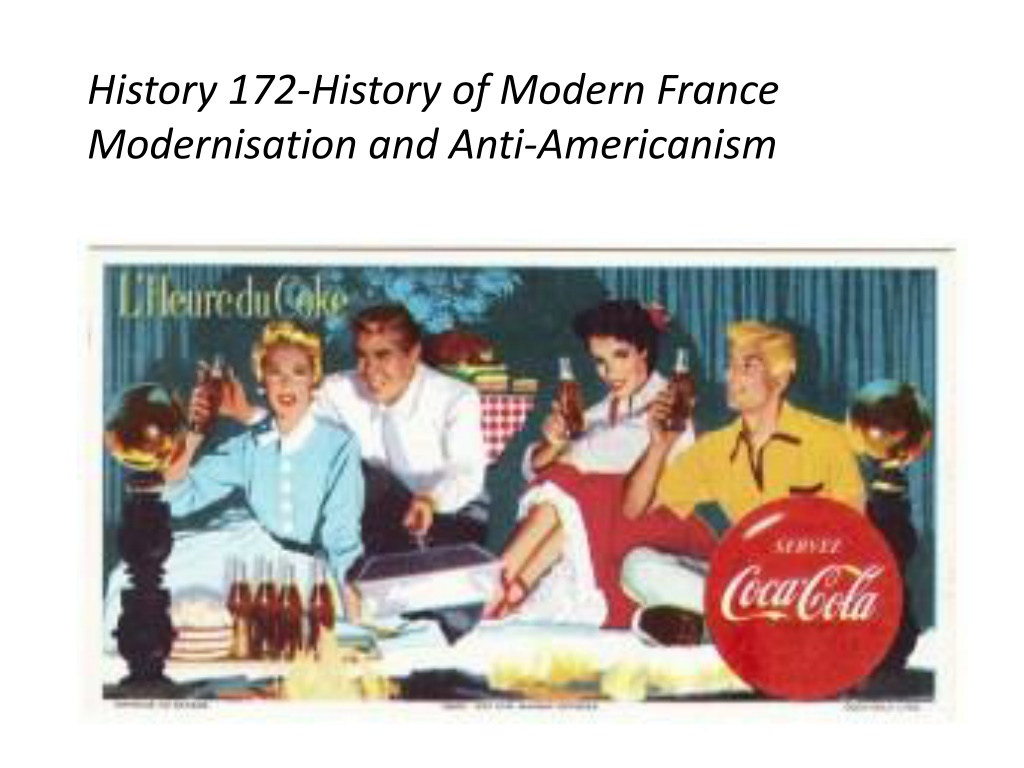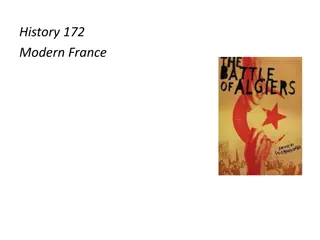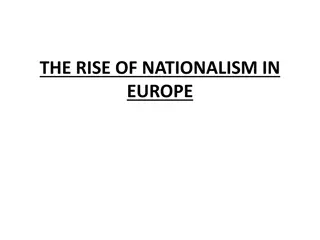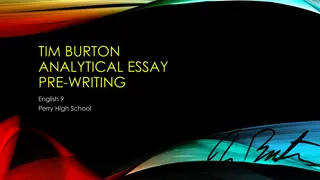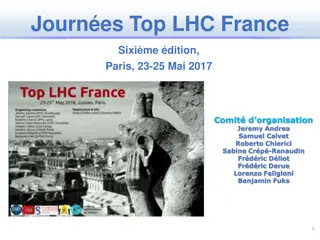Modernisation and Anti-Americanism in History of Modern France
Mini-overview of the Bretton Woods Conference in 1944, where the US aimed to prevent postwar recession by recycling surpluses abroad, leading to the establishment of global institutions. The end of Bretton Woods in 1971 marked a shift towards financialisation of the economy through high debts and the control of the world economy by the US.
Download Presentation

Please find below an Image/Link to download the presentation.
The content on the website is provided AS IS for your information and personal use only. It may not be sold, licensed, or shared on other websites without obtaining consent from the author. Download presentation by click this link. If you encounter any issues during the download, it is possible that the publisher has removed the file from their server.
E N D
Presentation Transcript
History 172-History of Modern France Modernisation and Anti-Americanism
Mini-overview of Post-war Global Economy
Bretton Woods 1944 Conference in New Hampshire Allies meet to set up postwar economy Currencies pegged to price of gold US held 2/3 of world s gold supply essentially, fixing the world economy to the dollar US is the only creditor nation after WWII IMF to compensate for trade imbalances of payments
Why Bretton Woods? US agenda: prevent postwar recession in US by recycling US surpluses abroad, giving battered countries with no financial credit the means to pay for American goods. Should recycling of US surpluses be institutionalised at the global level or left to the discretion of US? John Maynard Keynes vs. Harry Dexter White K = create world institutions for guaranteeing wealth transfers (recycling), much like USA does internally among its federated states (but unlike Europe today, which refuses to create such institutions) W = Wants to preserve USA s discretion to recycle surpluses abroad Despite its refusal to subject itself to international economic institutions with sovereign economic authority, the US opted to willingly recycle its surpluses with a great degree of liberality
Results of Bretton Woods Fix the dollar to gold, then world currencies to the dollar. Dollars flow into Europe and elsewhere (aid, loans, investments), providing means to purchase US goods. Much of the world is now at the mercy of decisions made in Washington and New York about global wealth flows
End of Bretton Woods 1971: Nixon takes the US (now running deficits rather than surpluses) off gold standard Dollar becomes fiat money (Federal Reserve Bank and Treasury decide how much to print no longer backed by gold but many countries are still pegged to dollar) 1970s-2000s: US to control world economy through running high debts!! Debts: government, trade and consumer Financialisation of the economy: debts became bundled with assets in obscure financial instruments, creating new kinds of money bank wealth based on colossal but hidden debts Why? The trick now was to recycle other countries surpluses through Wall Street rather than recycling American surpluses abroad The great profits made in other producer countries as the result of American consumption (and Americans went into debt to buy those goods) made their way to Wall Street, where they got combined with financial products that conceal debts indeed, debts themselves become money among banks, who trade them
Worldwide effect of this? Small countries suffer deflation and crushing debts IMF (International Monetary Fund) lends to weak countries in crisis, but on condition that they cut public spending (which shrinks their economies), privatize public assets (often natural resources) and pay back loans with interest (but now without the public assets or tax revenues of productive forces) Downward deflationary spiral and indebtedness: violence, right and left wing revolutions
2008 Crisis US banks go bankrupt, transfer their debts to the government books private debts are thus nationalised Other countries forced to do the same, even economically weak ones Greek gov t bails out its banks, but goes bankrupt in the process Germany now in much the same positions as US after WWII Germany refuses to recycle its surpluses to spur production in weak Eurozone countries like Greece it will lend but not recycle (or redistribute). The US opted to redistribute through aid after WWII, with great results for both Europe and US.
2008 Crisis Germany today Could do as Keynes proposed to US in 1944: Push Europeanisation of economic institutions further: create European treasury that can recycle surpluses around Europe, the way the US Fed and Treasury do around the entire US (e.g., military bases in the deep south, which are thus spared from outright economic depression national benefits, pensions, public works projects) G could do as US chose voluntarily to do after 1944 (after rejecting Keynes international economic regulatory institutions) Just give money (recycle its surpluses) to poor countries to provide them the means to purchase goods and generate productive power of their own What Germany is choosing to do Saddle bankrupt countries with more debt, forcing them to shrink their economies by prioritising debt repayment over investments to spur jobs and consumer demand
Now with the future global economy in mind, let s turn to what the US did after WWII for France and the rest of Europe
US Financial Assistance Blum-Byrnes Agreement (1946) France s debt to US waved - $2 billion US Marshall Plan (1948-1952) Aid to Europe Accounted for 6.5% of France s GDP in 1949 Lowering of trade barriers; Grants, loans, technical aid Helped US economy
Demographic Growth Baby-boom 1946 (pop: 40.3 million) 1985 (55 million) 1/3 of population under 20 years old in 1950s Finally, population growth France s early defeat in 1940 partially accounts for this Explosion in Education spending Need trained workers and smart managers for a complex economy Dramatic urbanisation from 51% of total pop before WWII to 69% in 1985
Economic Progress Les trentes glorieuses Consumer Revolution Between 1946 and 1960s: 47% rise in spending Wages Increase Despite population increase, wages rise 40% increase in real wages between 1946 and 1960s Agricultural or Green Revolution Productivity increases 30% between 1946 -1962 Results of industrial agriculture: better fed and live longer + urbanisation Ecological and health damage (cancer, diabetes)
Economic Progress Consumer Revolution Between 1946 and 1960s: 47% rise in spending Wage Increases Despite population gains, wages rise 40% increase in real wages between 1946 and 1960s Agricultural or Green Revolution Productivity increases 30% between 1946 -1962 Results of industrial agriculture: Better fed and live longer + urbanisation Ecological and health damage (cancer, diabetes)
Jean Monnets Reconstruction Plan 1946-1951 Revive steel industry in German territories under French Protectorate system France s exploitation of the Ruhr area and Saar Protectorate (Germany) Ruhr came under International Authority in 1949 (pre- condition for the establishment of the Federal Republic of German)... That is, under the control of Allies Mined for coal, France does very well from this Office of Planning established Monnet brought labour, communists and financiers to the table to hammer out policies for economic development
European Coal and Steel Community 1951-2002 ECSC founded in the Treaty of Paris (1951) Belgium, France, West Germany, Italy, Netherlands and Luxembourg Spurred by Robert Schuman, French Minister of Foreign Affairs strongly supported by USA to make war not only unthinkable but materially impossible peace through economic bonds Subsequent institutions: European Economic Community and European Atomic Energy Community (both 1967) First step towards the European Union
Political Economy Mix of dirigiste and liberal measures State spending on social, public and economic infrastructure But loans instead of more rigorous, coercive redistribution methods Inflation, initially high in early 1950s, was checked by mid to late 1950s
A Nation of Consumers Highest per capita consumption rates in Europe by 1959 Frigo and formica symbols of Americanisation By 1958: 11 million homes had radio sets By 1960s, 25% of all homes had frigo and washing machine, 3x increase since 1954
Jacques Tati, Mon oncle http://www.youtube.com/watch?v=bW0bZBXJFZ U http://www.youtube.com/watch?v=LE9t98Gox60 The (modest) uncle from Paris visits his wealthy, modern suburban sister (1stclip) His brother-in-law gets him a job at the modern factory (2ndclip) What messages does this film convey about modernisation?
Anti-Americanism Strong on Communist Left American financial support = economic colonisation Pierre Poujade s populist right movement Small merchants and shopkeepers in villages and rural areas, hit hard by modernisation Pulled in some communist supporters
Communist criticism of USA A civilisation of bathtubs and frigidaires Communist writer Louis Aragon Saw Marshallisation and Coca-colonisation as against French interests 1949 dockworkers refused to unload American goods (Marseilles, Bordeaux) Fear that US was making western Europe into a military base to attack USSR
Communist journal: LHumanit Titles One can starve with a telephone Not everyone has a bathroom Consumerism as bourgeois elitism (note: today in Europe, there are enough empty houses to home more than twice the number of homeless people)
Jean-Paul Sartre Initially ambivalent about US (1940s) but became a fellow traveller of the PCF and anti-American in 1950s Played role of public intellectual to denounce anti-semitism (in the spirit of the Dreyfusards): Sartre focused on the Rosenberg trial in US Julius and Ethel Rosenberg: Jewish American family convicted of spying for the USSR. Death penalty in 1953. The Rosenberg Trial is seen in France as part of American fanaticism and anti-semitism moment of McCarthyism
Poujadisme Pierre Poujade Quasi-fascist in 1930s (supported Doriot s movement against the leftwing Popular Front) Supported Vichy, before escaping to North Africa Gaullist after WWII (conservative)
Poujadisme Union de d fense commer ants et artisans (1953) Conflated heavy taxes on this group with Americanisation big businesses crushing the small Against price-controls (implemented to reduce inflation but inflation benefited small businesses) 400,000 members by 1955 Anti de-colonisation Sharp anti-Semitic barbs (refused to see Jews as French) Won 52 seats in the National Assembly in 1956 Faded in 1958 upon the rise of the 5thRepublic
Coca-Cola Targeted in anti-American campaigns, why? Seen as tool of foreign policy Head of company was a former Roosevelt advisor, who saw Coca Cola as a vehicle for spreading American democracy Heavy propaganda Economic concerns Coke s repatriation of profits from France Threat to domestic wine and juice industries Health concerns (coke leaves? Phosphoric acid?)
Public affair Coca-Cola fights back doesn t want France to set a precedent Cold War politics? CC chief gets US government to apply pressure on France James Farley (chairman of CC): CC was not injurious to the health of American soldiers who liberated France from the Nazis so that the Communist deputies could be in session today. French government acquiesces: April 1950
Soft-drink politics in 1999 Coca-Cola tries to buy the French soft drink Orangina, originally produced in Algeria in 1930s and sold in Europe after WWII. Production moves to Marseilles in 1962 during Algerian War French government blocks sale based on anti- competition grounds in 1999.
